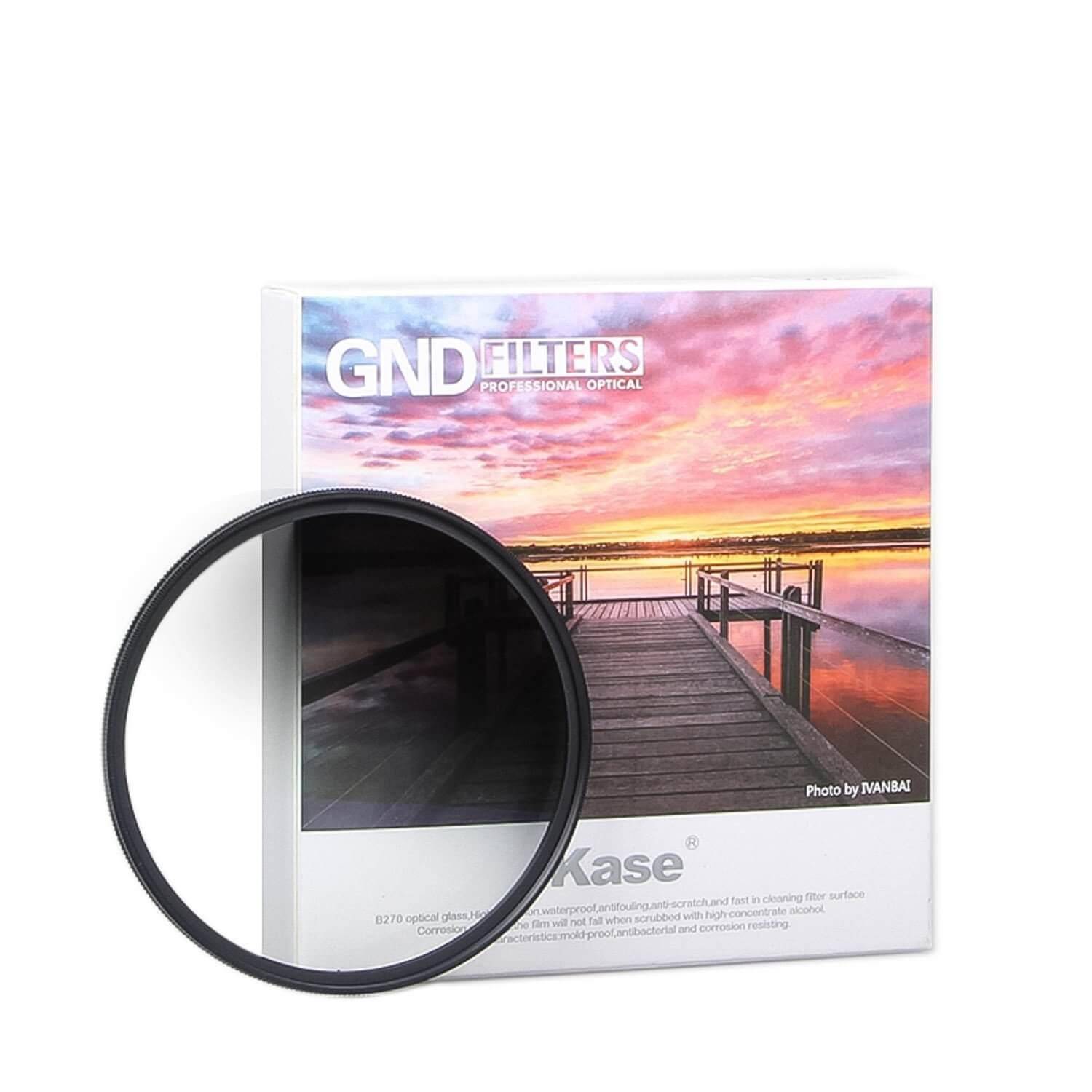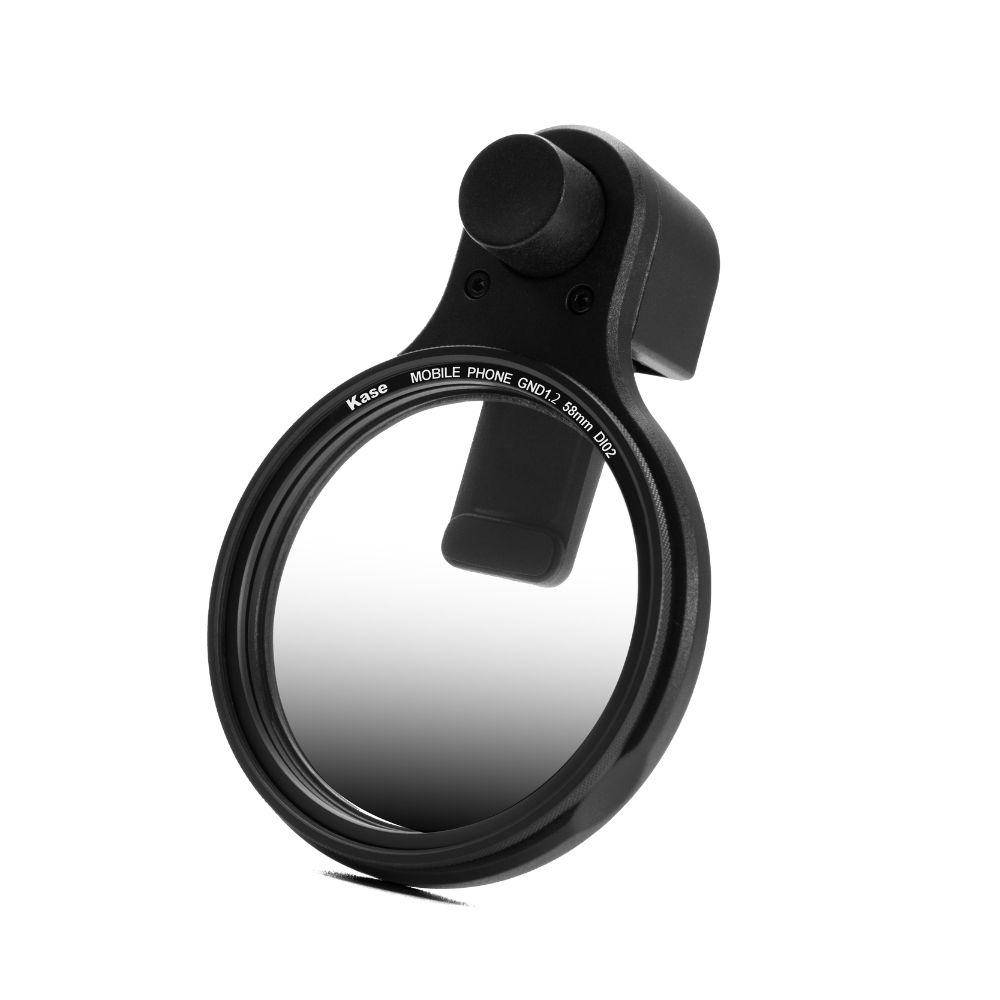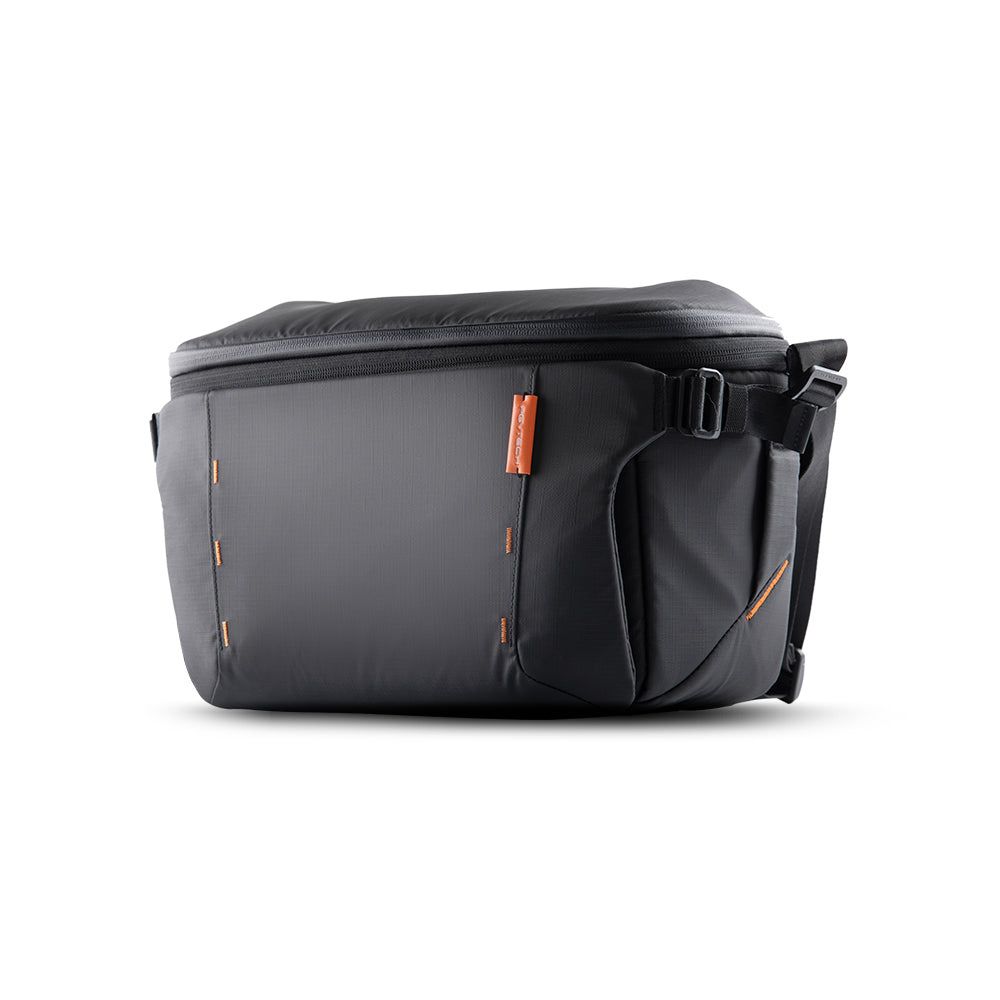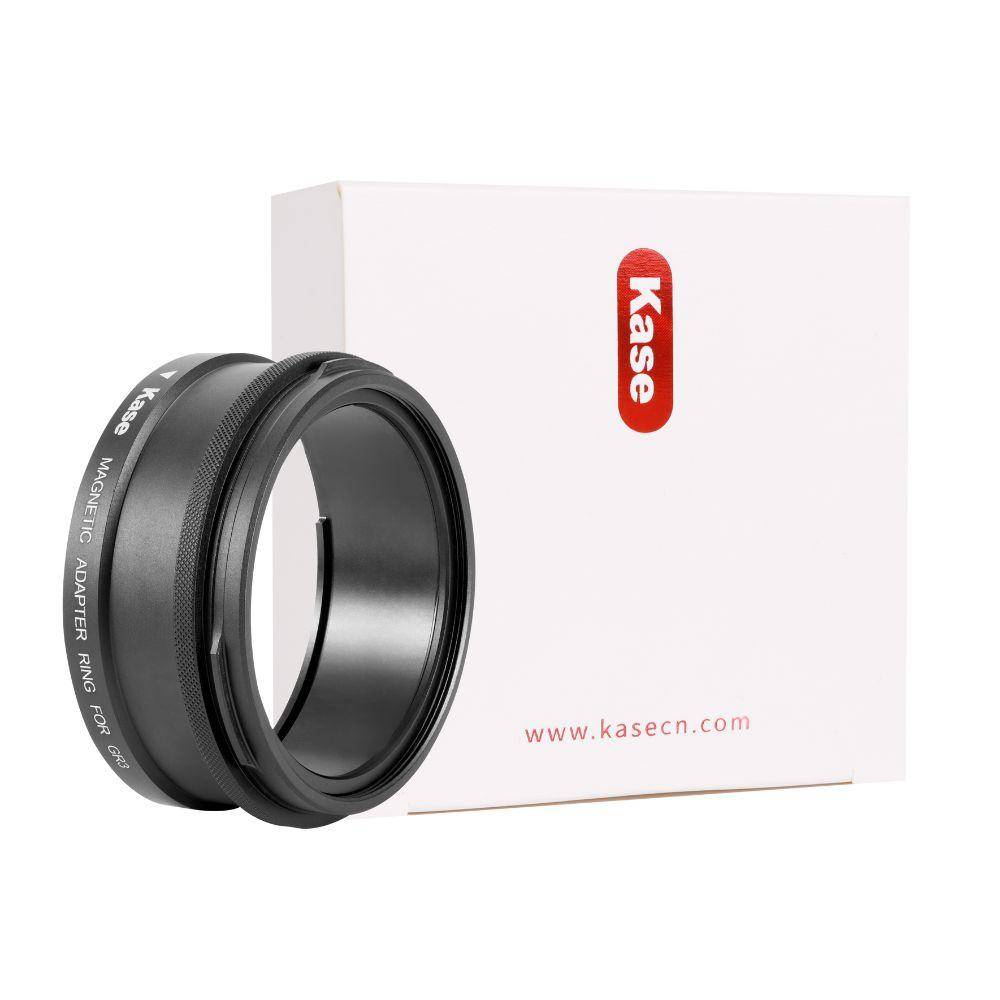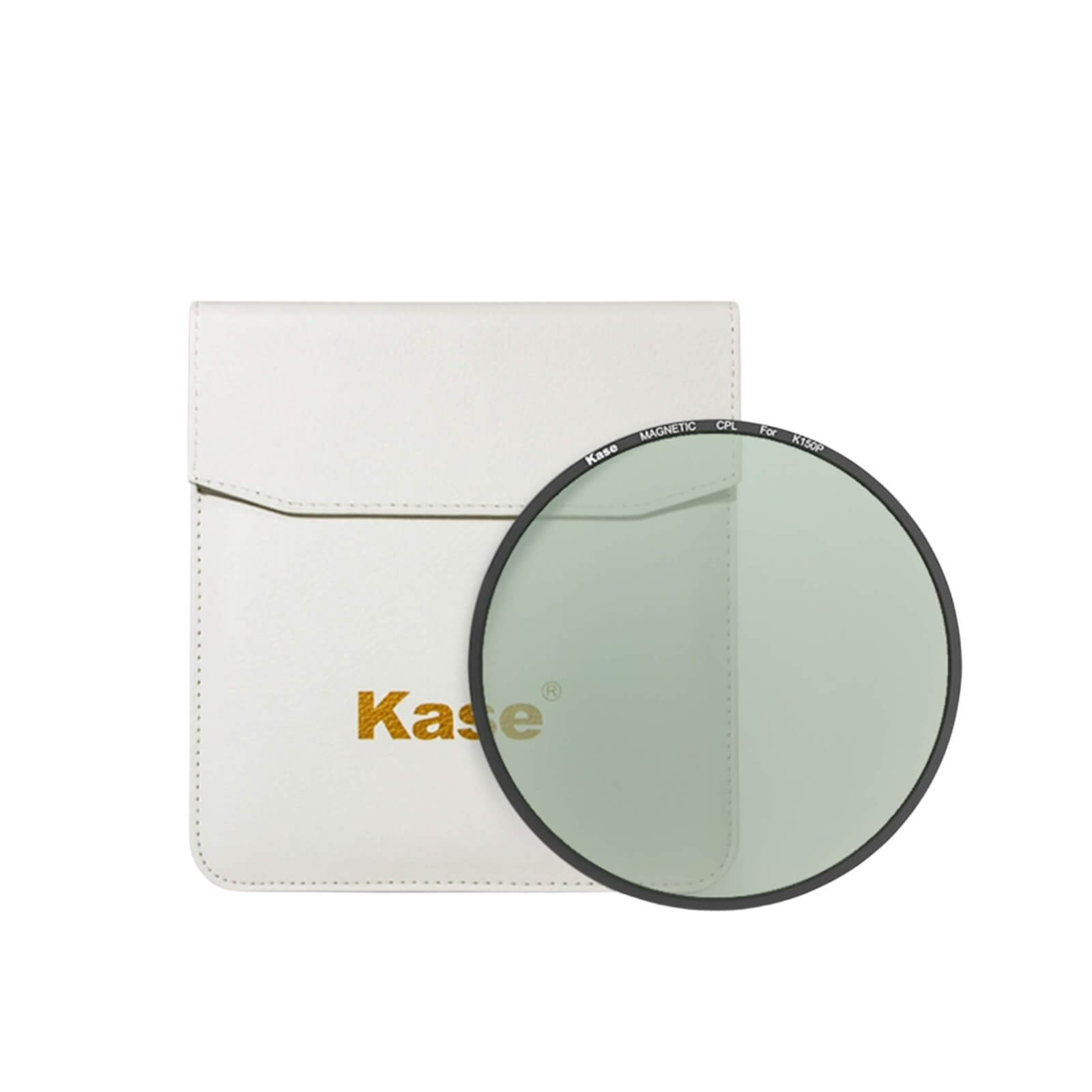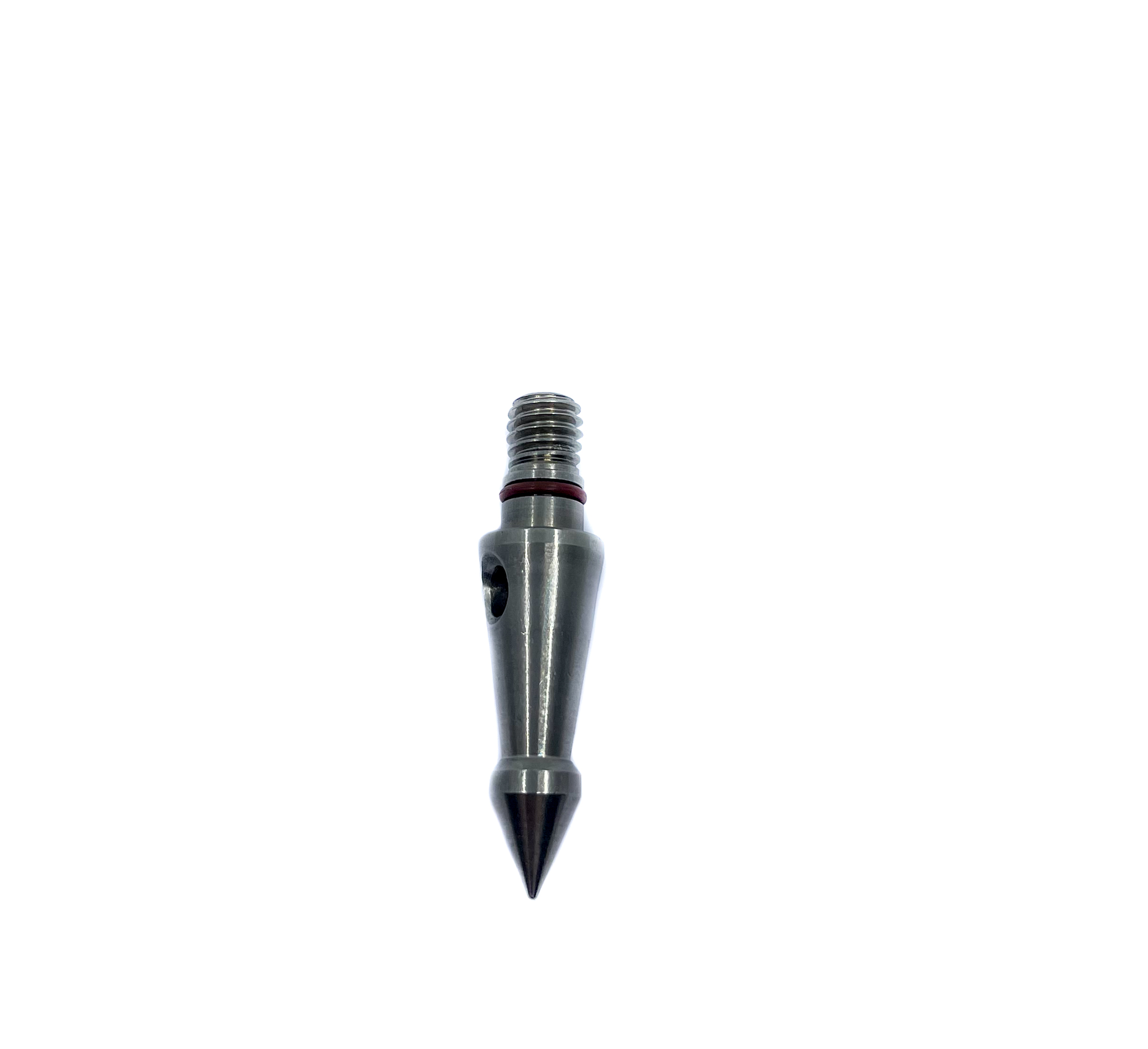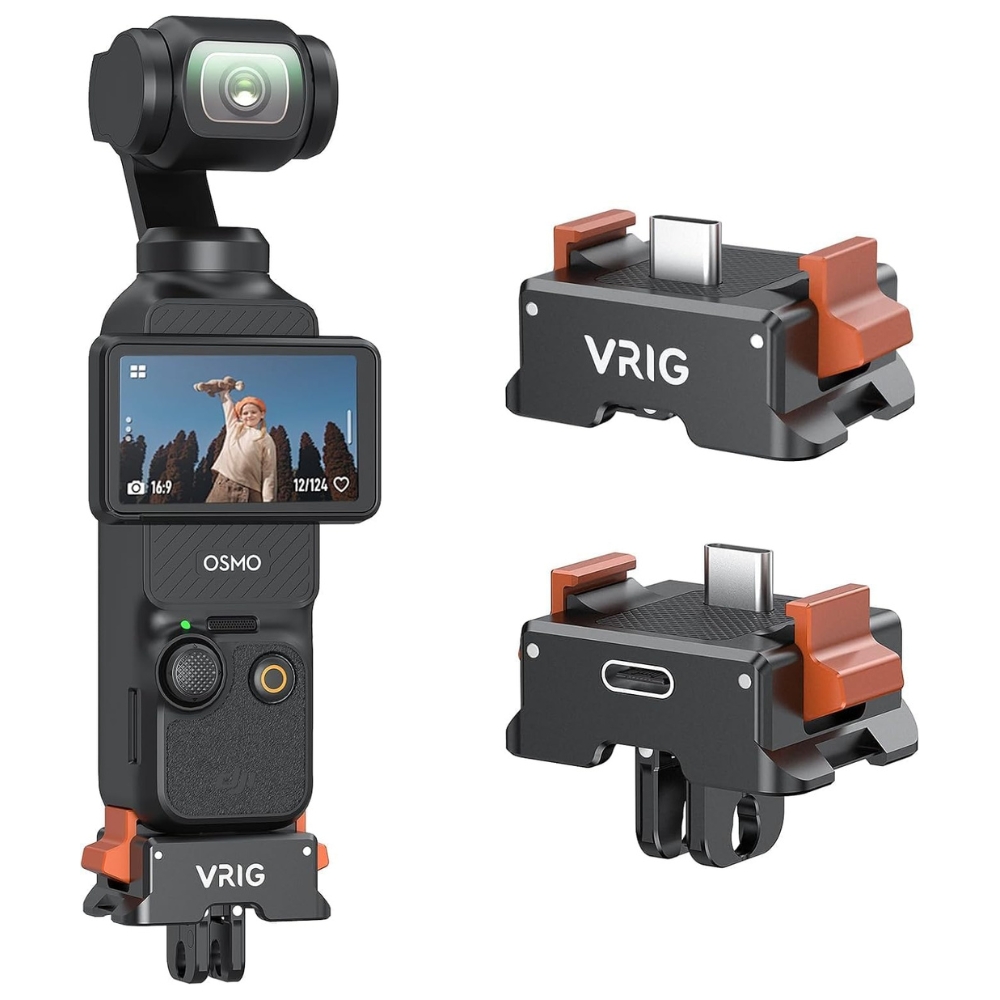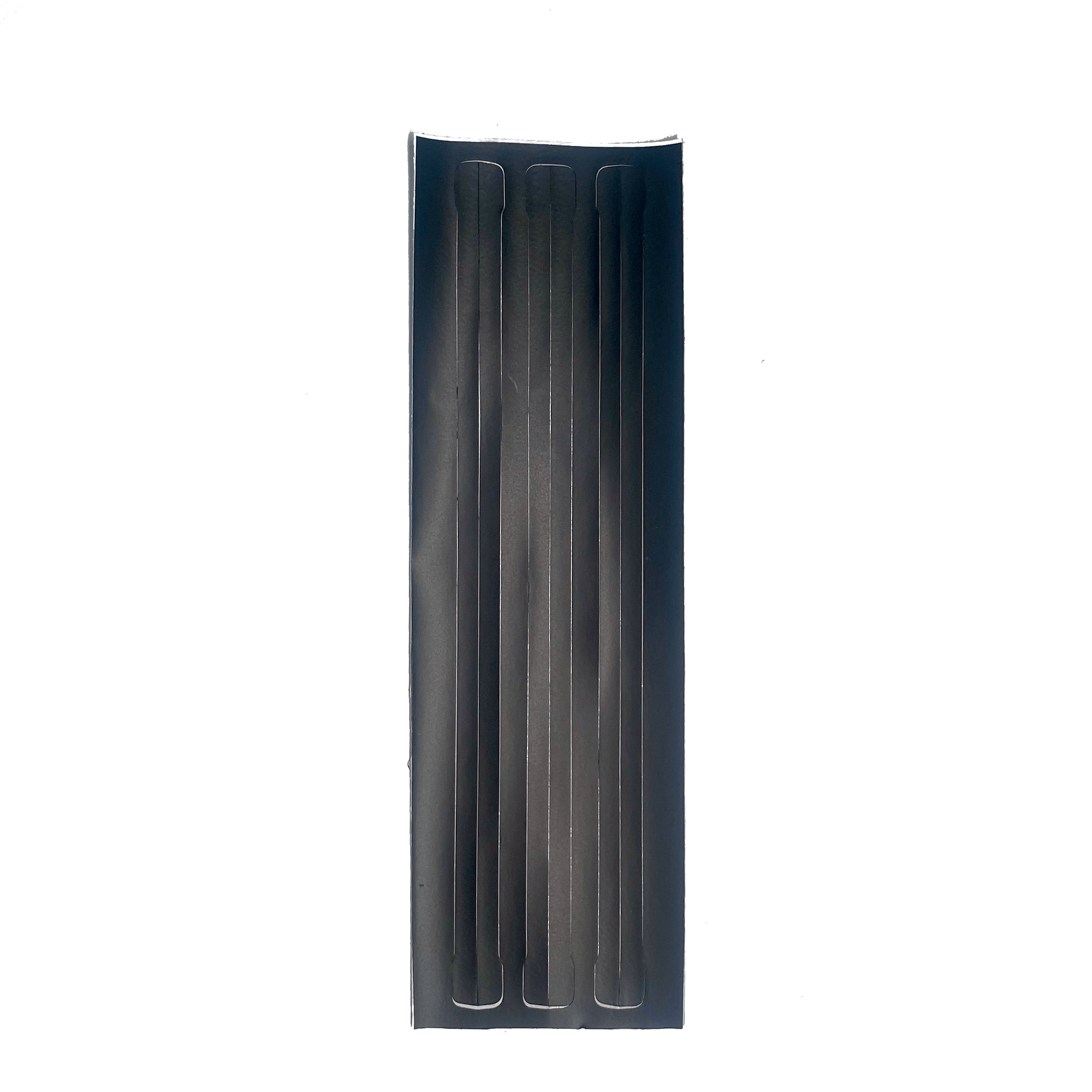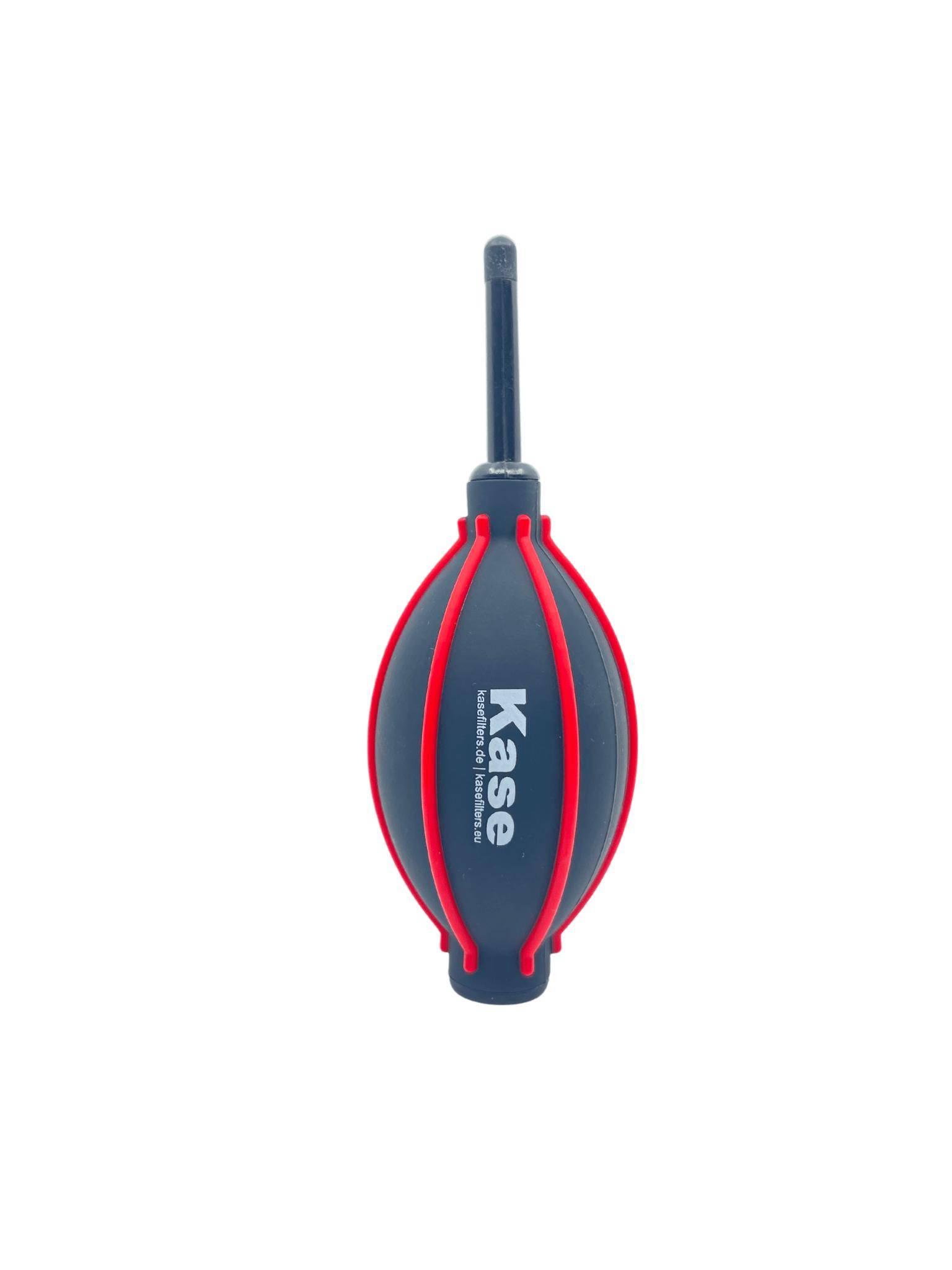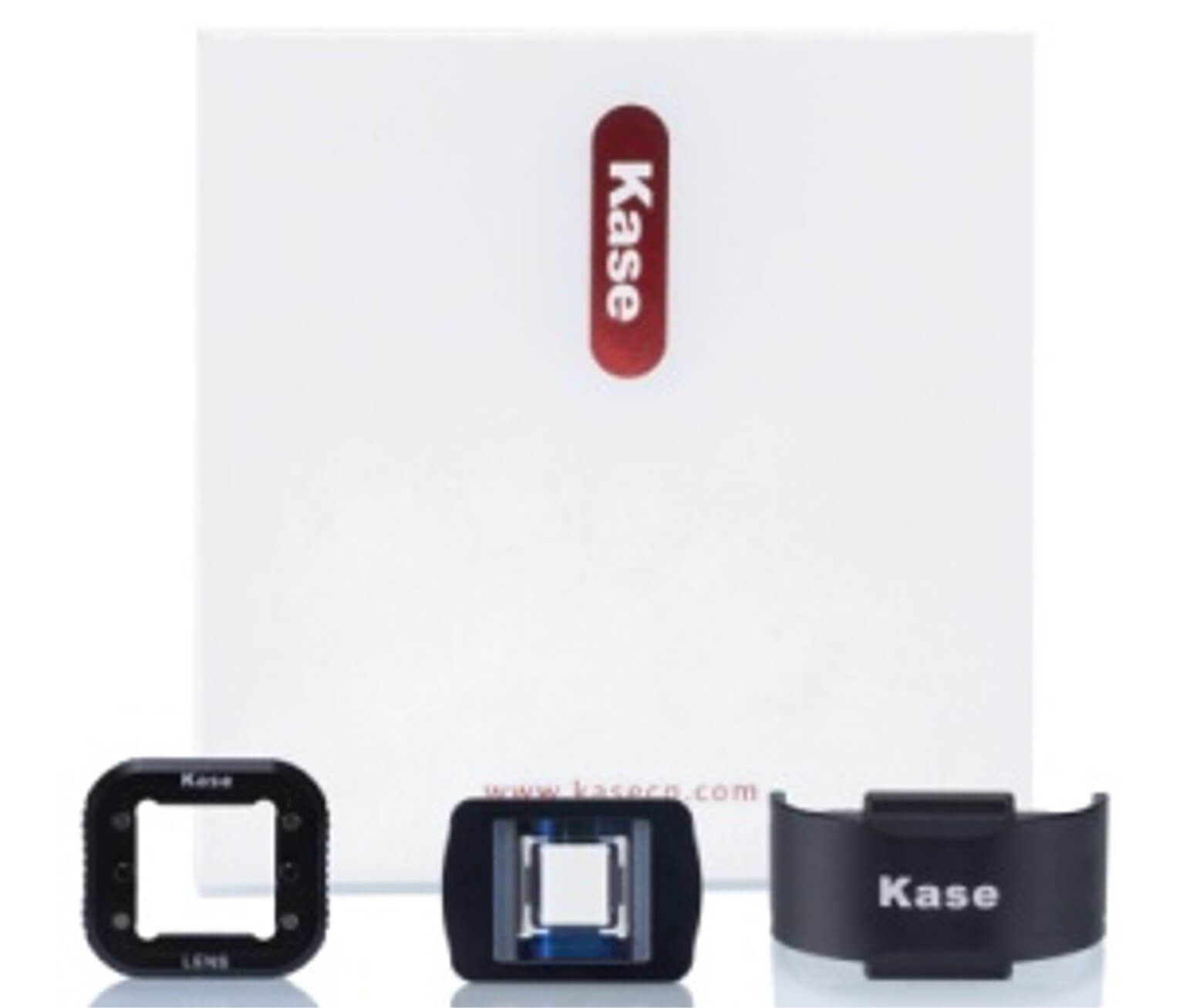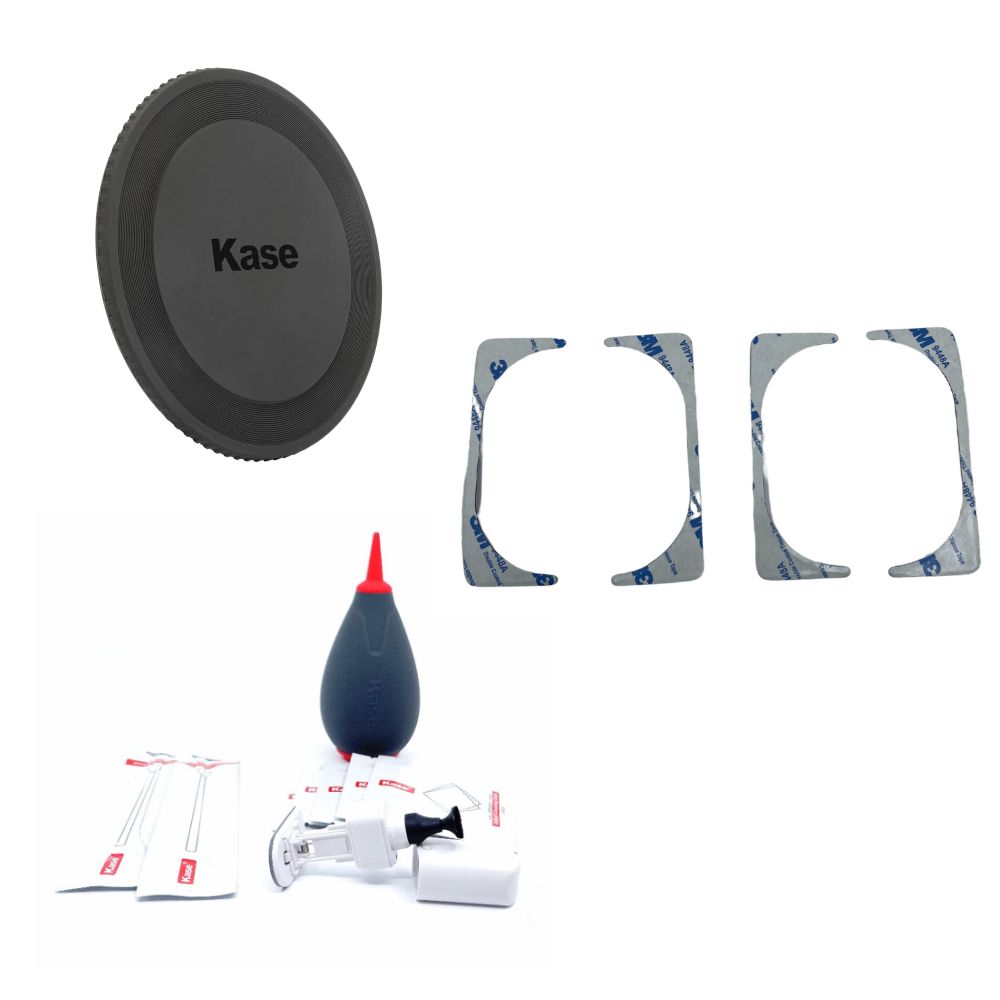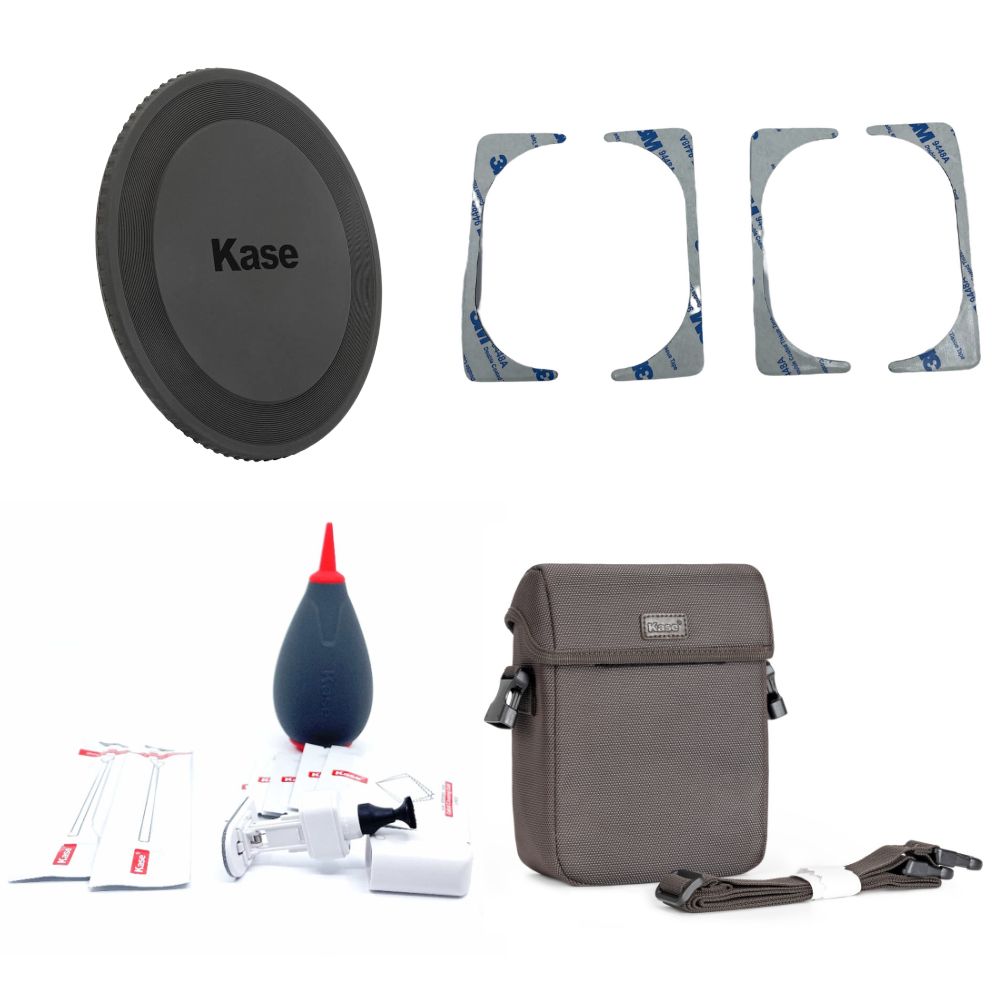Screw-in circular graduated ND (GND) filters from Kase
Check out our screw-in circular GND filters and all the information you need to choose the right one.
-
Filter Holder
-
Filter Sets
-
Filter
-
Tripods
-
 Lenses
Lenses
-
Adapter Rings
-
Smartphone
-
 Charger
Charger
-
Accessories
-
Sale
-
Nice To Know
Filter products
Not In Stock
In Stock
FAQ about screw-in circular graduated ND filters
What does a GND filter do?
A Graduated Neutral Density (GND) filter balances exposure in photos with varying brightness. It is used to address scenes with significant variations in brightness, typically between a bright sky and a darker foreground. GND filter has a gradient that darkens one part (usually the sky) while leaving the rest clear, preventing overexposure. This filter enhances dynamic range, allowing for well-exposed shots in challenging lighting conditions, particularly in landscape photography.
Which type of GND filter do I need?
It depends on what you are planning to shoot. You can choose from the following filters:
- Soft GND filters: The gradient from transparent to dark is very smooth, and there are no harsh transitions. They are perfect to use when you have some protruding objects over the horizon (e.g., mountains that cross the horizon line).
- Hard GND filters: Hard GND filters have a distinctly sharp transition of the gradient from dark to clear. These filters are good for scenes that have a straight horizon line and no protruding objects above the horizon (for example, a seascape with a wide view).
- Medium GND filters: This type of GND filter is in between soft and hard GND filters. The gradient is not so smooth, but also not harsh. Medium GND filters are versatile and can be used in most situations to shoot away from or against the sun.
- Reverse GND filters: These filters have the darkest part in the centre which goes clearer towards the end of the filter. Reverse GND filters are perfect for photographing against the sun where the light is most intense on the horizon. They are widely used for shooting sunsets and sunrises.
How to choose the size of a screw-in circular graduated ND filter for my lens?
Look for the lens diameter indicated on the front of your camera lens. This measurement is often denoted by a symbol like Ø followed by a number (e.g., Ø 58mm). If you can't find the diameter on the lens itself, check the lens cap for the size. Alternatively, consult your camera's manual for information on the lens diameter. Once you have the diameter, choose a screw-in circular graduated ND filter with the closest or identical size. If in doubt, it's generally better to choose a slightly larger size and use a step-up ring to ensure compatibility.
When to use a GND filter?
A GND filter is best used for photographing landscapes featuring bright skies and darker foregrounds, sunrises or sunsets, seascapes with reflections, cityscapes with bright lights against dark backgrounds, and mountainous landscapes with peaks against a bright sky. This filter helps balance exposures, ensuring details are captured in both bright and dark areas of the frame. Also, graduated ND filters can be employed for creative effects, where precise control over the exposure in specific parts of the composition is needed.
Is it better a circular screw-in or a square graduated ND filter?
Die Entscheidung zwischen einem runden und einem rechteckigen Grauverlaufsfilter hängt von Ihren Vorlieben, der Komplexität Ihrer Szenen und dem gewünschten Grad der Kontrolle ab. Im Folgenden finden Sie Überlegungen zu den einzelnen Typen:
- Circular GND filters: Circular filters are easy to use and attach directly to the front of your lens. They are also easy to carry since you don’t need to use a filter holder for them. However, circular graduated neutral density filters have a fixed transition line, limiting your ability to precisely position the gradient in complex scenes with irregular horizons.
- Square GND filters: Square filters, when used with a filter holder, provide greater control over the placement of the graduated effect. This is advantageous in scenes with varied and irregular horizons. They allow you to adjust the position of the gradient to capture scenes with diverse elements and challenging lighting conditions.
Products you may like
Preorder possible
In Stock
In Stock
In Stock
In Stock
Preorder possible
In Stock
In Stock
In Stock
In Stock

